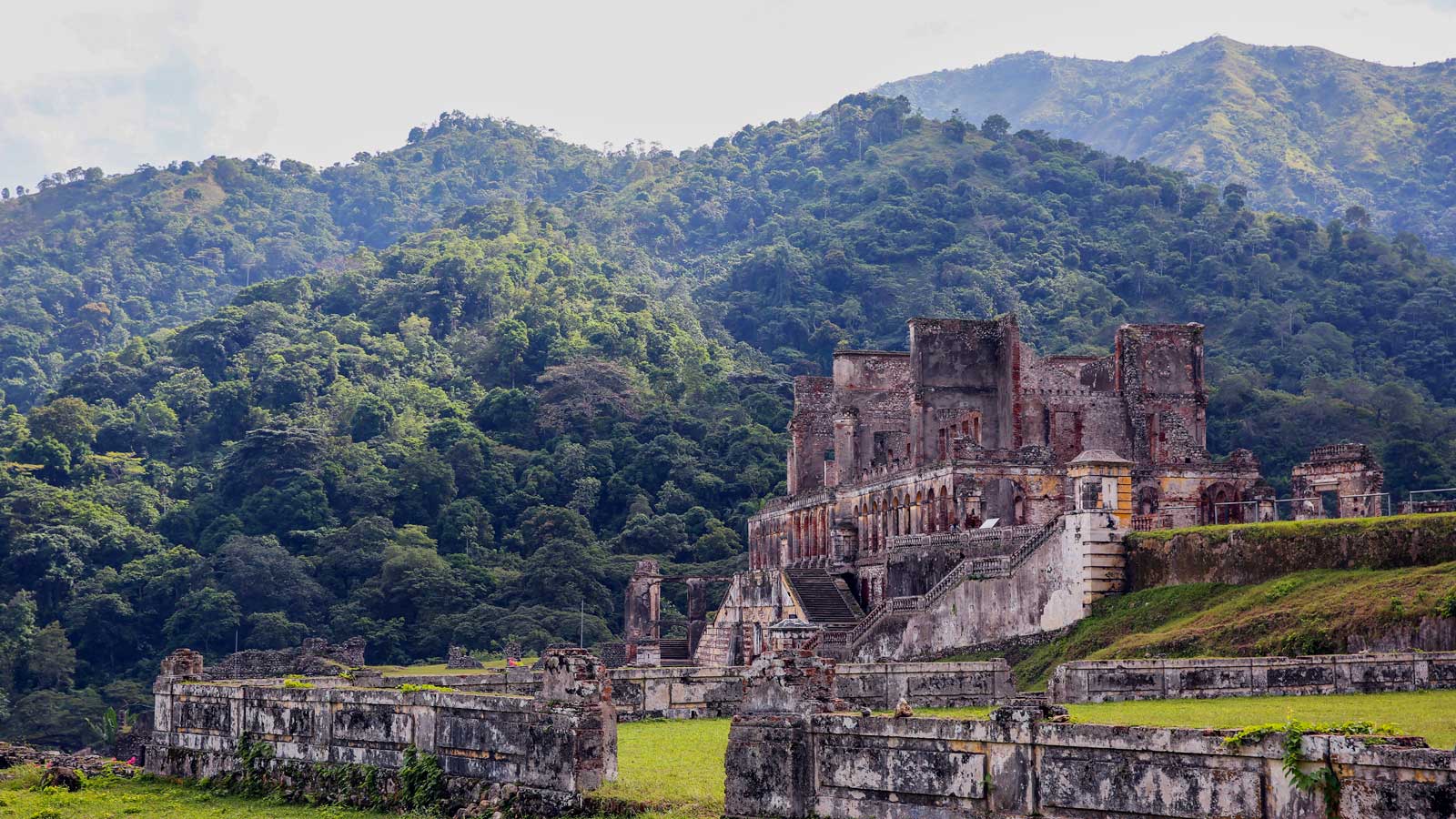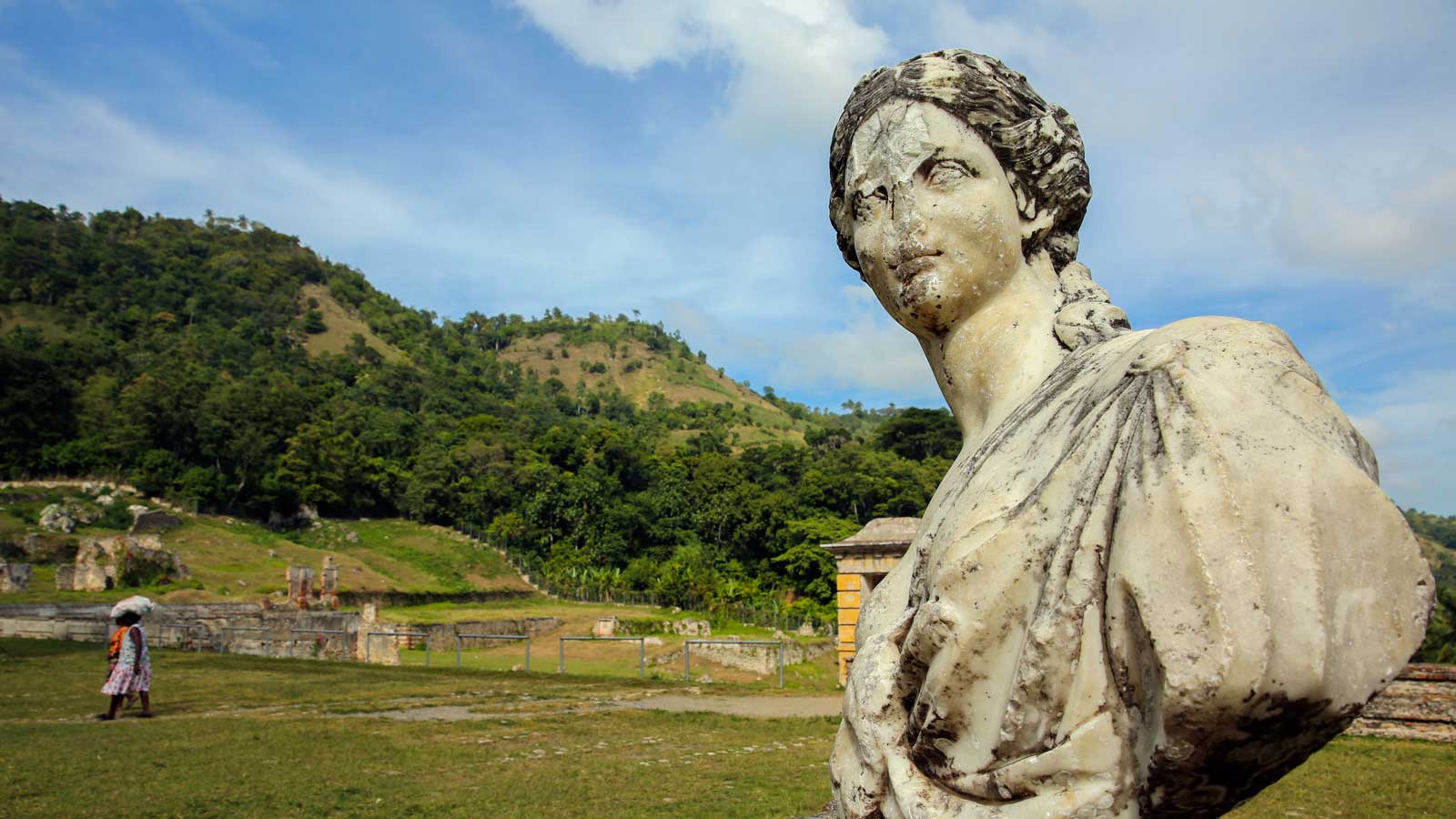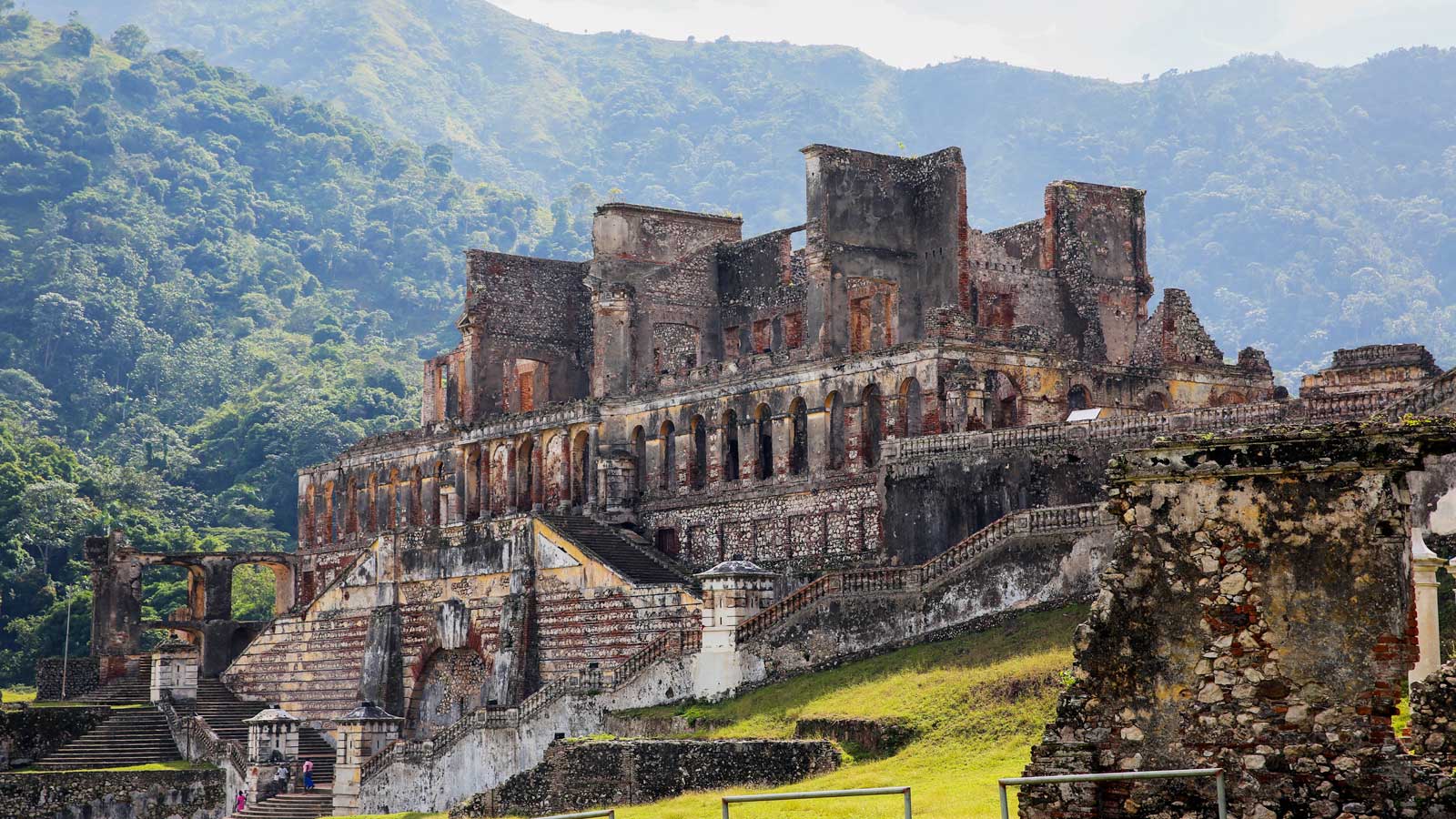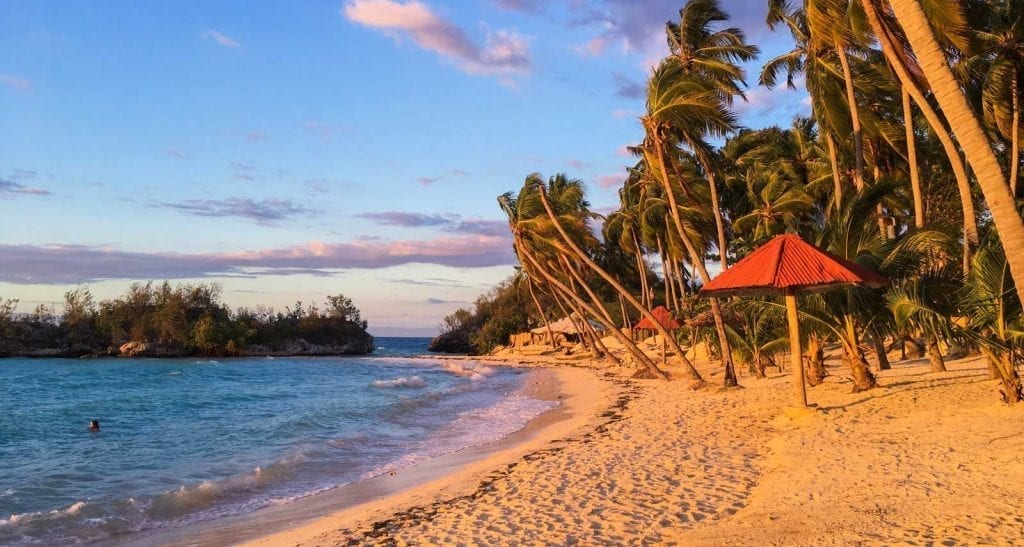Destinations
Sans-Souci Palace
Sans-Souci Palace, Milot, Haiti
Photo: Ricardo Lartigue
The ruins of Sans-Souci Palace are a UNESCO World Heritage monument to post-revolutionary opulence.
Share
Sans-Souci Palace shares a UNESCO World Heritage Site with the Citadelle Laferrière. A visit to both sites is considered essential for any trip to Haiti, and the hike (or horse-ride) from Milot to the Palace and then on to the Citadelle is well-worth the effort.
Sans-Souci Palace, which translates to ‘the Worry-Free Palace’, dates back to 1811, just after Haiti had become the world’s first independent black republic. Despite the weight of time – and a significant earthquake during the nineteenth century – the ruins of the Sans-Souci Palace maintain an imposing air and stand as an inspiring testament to the opulent post-revolutionary era.
Visitors can spend an hour or two exploring the palace and grounds before heading onward to the Citadelle.
History
The Sans-Souci Palace was built to serve as a residence for the revolutionary leader Henri Christophe, who would become king in 1811, a year into the palace’s construction. The palace was one of many lavish constructions Christophe ordered at that time, including the Citadelle Laferrière.
Christophe used his reign as an opportunity to build up Haiti’s standing in the eyes of the international community - particularly its former colonizer, France. Christophe was well known for the luxurious parties and feasts he hosted at the palace, and the palace’s design - from the lush gardens to the intricate waterworks installation still visible in the ruins - reflects this luxury.
The name “Sans-Souci” itself came from another Haitian revolutionary, Jean-Baptiste Sans Souci, who Christophe had asked to form a united front with, but who refused out of mistrust. A decade or so before the palace was built, Christophe invited Sans Souci to visit him. When Sans Souci accepted, he was promptly assaulted by Christophe’s guards – and legend has it that the palace bearing his name was built where he was killed.
Visiting the north of Haiti is a great way to brush up on Haiti’s history; here, visitors can see many of the country’s important landmarks, historic sites, and monuments dedicated to the memories and visions of pivotal figures in Haiti’s history.
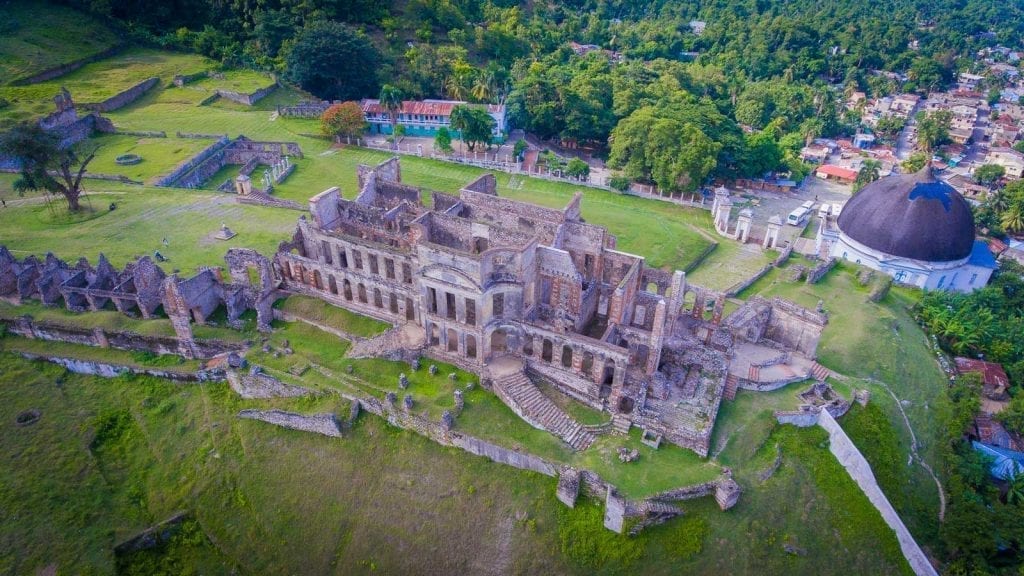
Sans-Souci Palace, Milot, Haiti
Photo: Ricardo Lartigue
Where to eat
Restaurant Lakou Lakay prepares excellent, and huge, traditional Creole feasts - just be sure to make a reservation.
Where to sleep
Most travellers visiting Sans Souci and the Citadelle stay in Cap-Haïtien as accommodation options in Milot are fairly basic.
Getting there
Sans-Souci is located in Haiti’s North Department, close to the town of Milot.
Culturally curious travellers are well-advised to carve out a chunk of time for exploring the north of Haiti. While the capital city of Port-au-Prince and the entire South of the country are full of gorgeous destinations and exciting things to do, the North of Haiti is where a lot of the country’s history has its roots. Cap-Haïtien is the perfect base, and with the recent opening of the airport to international flights, visitors no longer need to arrive in Port-au-Prince first. Around a half-hour drive south of Cap-Haïtien is Milot, the jumping-off point for hikes to the UNESCO site.
For a small, negotiable, fee, a local guide will lead individuals or groups from nearby Milot up to the palace and guide you to the areas open to the public, which can otherwise be difficult to distinguish. A fair fee for a guide is US$20 to US$30, plus a fee for hiring a horse.
External Links
Categories
Tags
Share
Find Sans-Souci Palace
External Links
Categories
Tags
Share
4 reasons why Haiti is an adventure
Travellers exploring the Kaskad Pichon waterfalls, Haiti
Photo: Franck Fontain
Looking for some cool things to do?
Party like a Haitian at Jacmel Carnival
A weekend of partying at Jacmel’s annual Carnaval is the
Unreal art at Galerie Monnin
International-caliber art gallery or fairy tale mansion? Galerie Monnin is
Rum is big in Haiti. Here’s what to drink.
While the Barbadians are said to have invented modern rum,
The Museum of the Haitian National Pantheon
Get up close to artefacts from a Colombus ship, slave
Explore Haitian Nature at Wynne Farm Ecological Reserve
Wynne Farm Ecological Reserve is a successful sustainability initiative where
Nine of the Most Beautiful Destinations in Haiti
Sun-kissed and sandy-toed, we’ve toured Haiti to bring you our
8 Cheap and Free Things to Do in Haiti
Haiti offers a wealth of wildlife, nature, arts and culture
Festi Graffiti – Haiti’s International Festival of Urban Arts
Haiti may be known for beaches and rum, but the
Meet the Haitian Cyberpunk Artists of Grand Rue
A Grand Rue collective upcycling junk into Vodou-infused cyberpunk sculptures,
Haitian Cuisine: A Culinary Map of Haiti
Come with us on a lip-smacking journey as we map
Subscribe to our newsletter
Get more travel inspiration, tips and exclusive offers sent straight to your inbox

